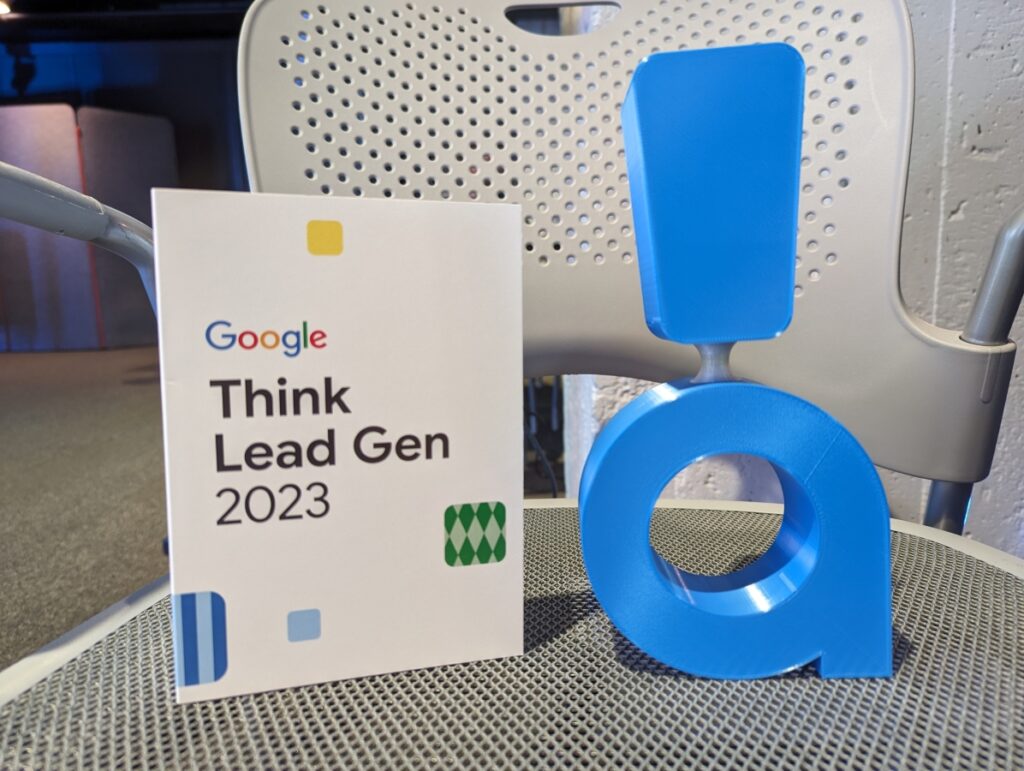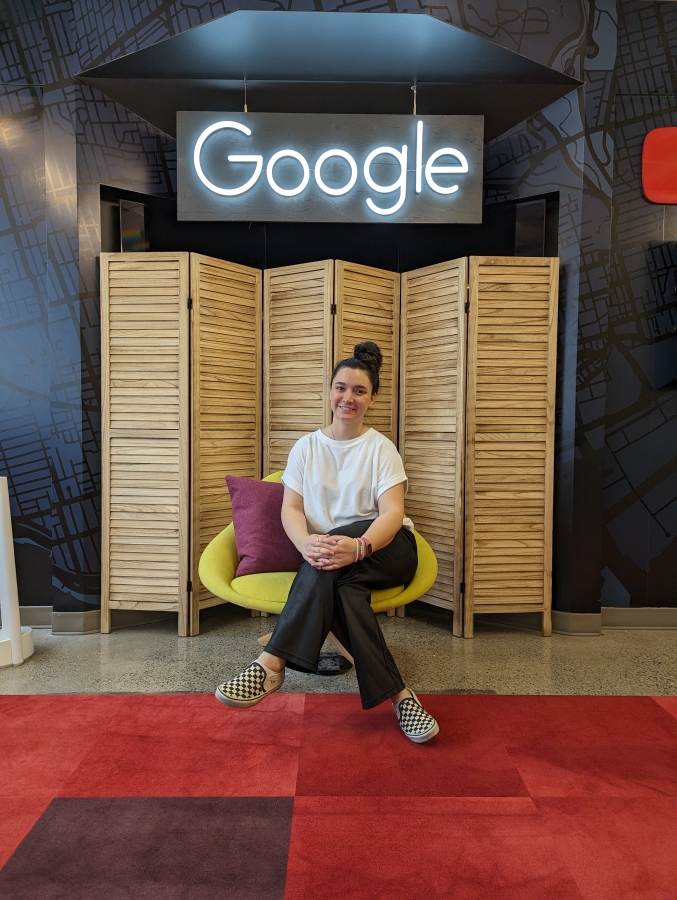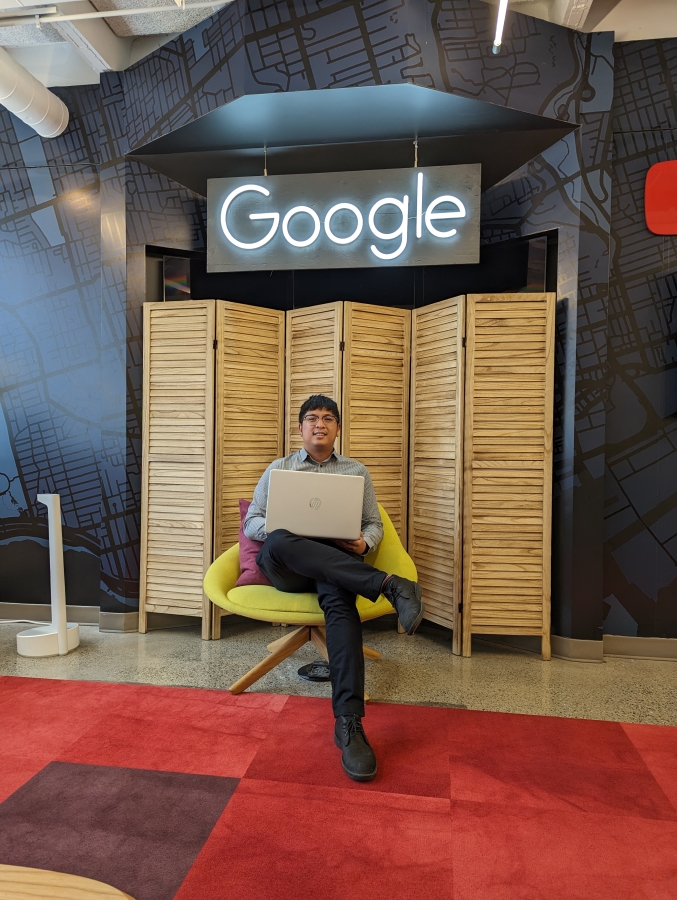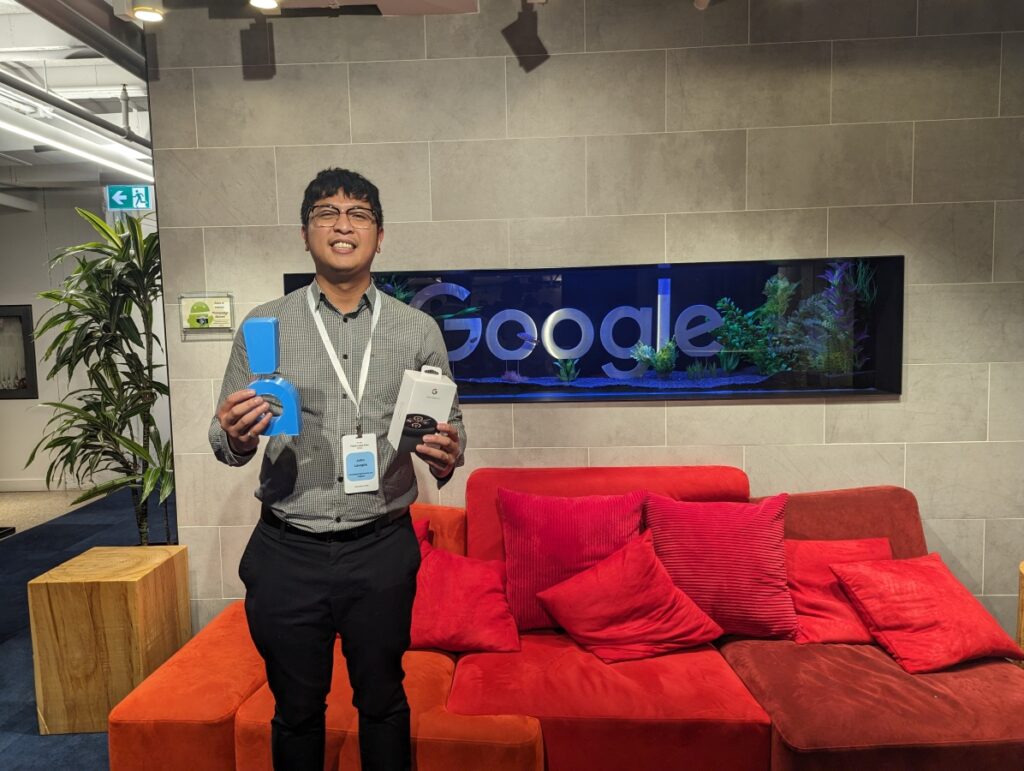Elevating Lead Gen with AI: Key Takeaways from Google’s 2023 Event
I recently had the chance to represent Adster Creative at the ‘Think Lead Gen 2023’ event hosted by Google in Toronto, and it was an experience I won’t forget. My colleague Carolina and I were only in Toronto for two days, but I instantly fell in love with the city’s vibe and energy. However, the real highlight was attending the event at Google’s headquarters. Just being in that space was amazing – you could feel Google’s culture and brand all around you. The atmosphere was buzzing with ideas and innovation, setting the perfect stage for what turned out to be an incredibly insightful event.
The event itself was a high-level overview, focusing largely on Google’s AI and how we, as advertisers, can begin to place our trust in these advanced systems. While there weren’t detailed practical demonstrations – something expected since most attendees were invited by a Google representative who could assist in the implementation process – the event was more about laying the groundwork. It was designed to pique our curiosity, to make us think about how and why we should start considering Google’s AI in our advertising strategies. During this event, I documented all my takeaways that I feel are valuable to share with advertisers like us.
Takeaway 1: Trusting AI in Lead Generation
One of the first things that struck me at the event was how much Google is focusing on getting us to trust AI in boosting lead generation efforts. They used analogies & examples to explain how AI works. For instance, they talked about an old video game that was used to train an AI. It took the AI about 600 tries to finally nail the right algorithm to beat the game. This story was a great way to show that AI needs time and practice to get things right – just like a person learning a new skill.
What I took from this is that AI in advertising is a journey. We need to give it space and time to learn and adapt to our specific needs. It’s not about overnight success; it’s about letting the AI evolve and improve over time, which eventually leads to better results for our campaigns.
Takeaway 2: The Shift in Consumer Search Trends
Ryan Slick, a Senior Manager at Google Customer Solutions, shared some eye-opening stats that really made me think about how consumer search behaviour is changing. One key point was the increase in searches for non-branded terms compared to branded ones. This means people are more open to exploring new options instead of just sticking with the brands they already know. It’s a big deal for us advertisers because it opens up new opportunities to reach audiences who might not have considered our products or services before.
Another interesting stat was about the customer journey. On average, consumers use about 5.2 types of touchpoints before making a purchase or filling out a lead form. This tells us that the path to purchase is longer and more complex than we might have thought. It’s not just about nailing the landing page or the ads anymore. We need to think bigger – like spreading our message on YouTube, getting solid reviews, and even considering display ads. It’s all about being where our potential customers are, throughout their entire decision-making process.
Takeaway 3: Optimizing Website Forms for Better User Experience
A big eye-opener for me at the event was the importance of user experience in website forms. It’s like, you can do all this great work driving traffic to your site, but if the form at the end of the journey is a hassle, all that effort goes down the drain. Google stressed making these forms fast, clear, easy, and trustworthy.
- Fast: Nobody likes to wait. If your form takes forever to load or is clunky, people are going to bounce. Speed is key.
- Clear: Make sure your form is straightforward. Confusing forms just lead to frustration and lost leads.
- Easy: The simpler, the better. Cut down on unnecessary fields and make the form-filling process as smooth as possible.
- Trustworthy: People are wary about giving out their info. Make sure your form looks professional and secure, so users feel comfortable filling it out.
It’s all about making that final step in the customer journey as seamless as possible. A good form can be the difference between a new lead and a missed opportunity.
Takeaway 4: AI-Driven Strategies: Broad Match Keywords and Performance Max
At the event, Google really pushed their AI-driven products, and two things stood out to me: broad match keywords in Google Search Ads and Performance Max campaigns.
Broad Match Keywords
Google shared some stats that got me thinking. They said advertisers using broad match in target CPA campaigns saw, on average, 35% more conversions. That’s huge!
But from my experience, it’s not always a one-size-fits-all solution. Especially for accounts with tighter budgets, broad match keywords can sometimes feel like a gamble, potentially eating into the budget without delivering conversions. It seems like this strategy, in my opinion, might be more effective for campaigns with a bit more financial wiggle room.
Performance Max
This is another tool that’s all about using AI to boost your ad performance. They showed us that campaigns using Performance Max saw an 18% increase in conversions at a similar cost per action. That’s pretty impressive and suggests that Performance Max could be a real game-changer, especially for advertisers looking to get the most out of their ad spend.
These insights made me realize that while AI in advertising has a lot of potential, it’s also about finding the right balance and knowing your campaign’s specific needs and constraints.
Takeaway 5: From Lead Count to Lead Value – A New Perspective on AI in Advertising
The biggest and most impactful insight for me from the event was the shift in focus from just counting leads to evaluating the value of each lead. Google is urging us as advertisers to not just look at how many leads we’re getting, but at how valuable those leads are – basically, focusing on quality over quantity.
Google’s AI can facilitate this shift. However, similar to the earlier example of the video game that took 600 tries to beat, we too have to work with AI to make it effective. It’s not as simple as setting it up and letting it run. To really harness its power, we need to meet two key requirements: providing a clear objective and supplying the right training data.
- Setting the Objective: This involves mapping out the journey from lead to sale, importing offline conversions, and using value-based bidding strategies. It’s about giving the AI a clear goal to work towards.
- Providing Training Data: Using tools like enhanced conversion tracking and customer match helps the AI learn which leads are more valuable, enabling it to optimize campaigns more effectively.
The challenge for me here is balancing the need for immediate results with the AI’s learning curve. As advertisers, we’re often under pressure to show quick wins, but AI optimization is a process that unfolds over time. The good news is that Google’s AI is much more advanced now, so perhaps it’s time to rethink our approach.
In essence, it’s about striking a balance. We need to manage campaigns with a mix of our expertise and the AI’s learning capabilities. It’s not about handing over the reins completely, but rather using AI as a powerful tool in our advertising arsenal.
Final Thoughts
The theme of the event, an amusement park, couldn’t have been a more fitting metaphor for the world of digital marketing. It’s a realm filled with excitement and creativity, yet managing and planning within it can be a rollercoaster ride.
With the rapid rise of AI, the ever-evolving landscape of digital marketing, and the constant need for account optimization, it’s easy to feel overwhelmed. The time and effort required to experiment with AI can seem daunting. However, Google’s message was clear: embracing AI is the direction they’re heading, and there are tangible benefits to doing so. By relying more on AI, we can shift our focus to the creative aspects and other facets of digital marketing. And if Google’s stats hold true, AI can help focus on the value of each lead, rather than just the quantity.
But here’s my key takeaway: AI isn’t a set-it-and-forget-it solution. That’s why the role of Google advertisers and agencies remains crucial. To truly harness the power of AI, we need to work alongside it, continuously refining our objectives and feeding it relevant training data. It’s about constant optimization and experimentation. This partnership between advertisers and AI could very well be the future of maximizing value in Google Ads for our clients.
The event wasn’t just enlightening; it was also a dream come true for me. Visiting a Google Headquarters has always been on my bucket list, and this experience is something I’ll always treasure.
And as a fun side note – just like any good amusement park, we didn’t leave without some treats. There were popcorn and goodies, but the highlight was a raffle for a new Google Pixel Watch 2. And guess who won that watch? Yep, that’s right!
All in all, the event was not just informative but a lot of fun. It opened my eyes to the potential of AI in our field and gave me an unforgettable experience at Google’s headquarters.
Reach out to our team if you want to learn more!



